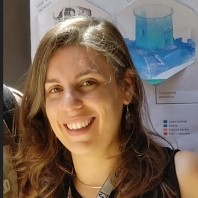Advanced Geomatic Techniques for the Built Heritage: Data Processing, Interpretation and Knowledge Management
A special issue of Geomatics (ISSN 2673-7418).
Deadline for manuscript submissions: closed (29 February 2024) | Viewed by 8905
Special Issue Editors
Interests: point clouds; heritage; mobile LiDAR; sensible spaces; eXtended Reality; Artificial Intelligence
Special Issues, Collections and Topics in MDPI journals
Interests: archaeology; photogrammetry; data processing; HBIM; ontologies; knowledge management
Interests: GIS; webGIS; spatial database; BIM/HBIM; geographical standards; architectural and built heritage standards; artificial intelligence; explainability
Special Issues, Collections and Topics in MDPI journals
Special Issue Information
Dear Colleagues,
Geomatics is a discipline that deals with the automated processing and management of complex 2D or 3D information. It is defined as a multidisciplinary, systemic, and integrated approach that allows the collection, storage, integration, modelling, and analysis of spatially georeferenced data from several sources, with well-defined accuracy characteristics and continuity, in a digital format. Nowadays, the processing of large amounts of data and information in an interdisciplinary and interoperable way relies on a growing variety of tools, together with data collection and processing methods. Furthermore, as in many other fields, computation and interpretation are now regarded as the primary drivers of innovation. Analysis tasks can be performed at a regional level thanks to the use of high-resolution images from satellite or aerial images; inferring information is possible through land-usage classification, and the shape can be described using ranging techniques such as LiDAR and radar pulse. The possibilities offered by new acquisition devices for dealing with architectural-scale complex objects are numerous. Low-cost equipment (cameras, small drones, depth sensors, and so on) are capable of accomplishing reconstruction tasks. Thus, since we live in well-connected digital world, geomatics can play a new role in research and development involving geospatial and related information leading to entrepreneurial opportunities.
Among others, the Built Heritage is the domain where geomatics plays a pivotal role. From a small scale (territory, landscape, historic villages) to a bigger one (architecture, archaeology, historic buildings), geomatics acts as the connection between the data collection stage and the final objective of any project. In more depth, geomatics give indisputable added value for the tasks of data collection, modelling, conservation, preservation, management and visualization. Recent technological advances (from both hardware and software sides) have made the integration of this technique the most straightforward way to embrace all the needs of a delicate domain such as the Built Heritage. This Special Issue aims to fill the gap between tradition and innovation, looking for basic and applied research where well-established methods and new ones are able to support each other to improve the body of knowledge of geomatics in the Built Heritage domain. Therefore, this Special Issue will collect papers related to new trends, best practices, tendences in geospatial technologies and processing methodologies for BH (Built Heritage) sites and scenarios.
We would like to invite you to contribute your recent research, experimental work, reviews and/or case studies, from the acquisition to conservation of BH contributions, covering, but not limited to, the following topics:
- Mobile mapping systems and co-registration methods in the field of archaeology and Built Heritage. Special attention will be given to algorithm optimization and multi-source data integration.
- AI-driven solutions for the interpretation of complex and sparse data. Semantic segmentation and classification will be, in the future, the key tasks where Artificial Intelligence will help the Scan-To-BIM process.
- Knowledge representation and the management of complex 3D models are nowadays performed with the aid of BIM tools for Built Heritage. We look for papers on semantic ontologies, new approaches to information management, data enrichment and BIM interoperability and data exchange with other information techniques.
- eXtended Reality and Geo-Visualization are gaining more and more importance in the field of Built Heritage dissemination and valorization. New approaches and integrated methodologies of geospatial visualization are important and relevant in this field.
Dr. Roberto Pierdicca
Dr. Francesco Di Stefano
Dr. Francesca Matrone
Guest Editors
Manuscript Submission Information
Manuscripts should be submitted online at www.mdpi.com by registering and logging in to this website. Once you are registered, click here to go to the submission form. Manuscripts can be submitted until the deadline. All submissions that pass pre-check are peer-reviewed. Accepted papers will be published continuously in the journal (as soon as accepted) and will be listed together on the special issue website. Research articles, review articles as well as short communications are invited. For planned papers, a title and short abstract (about 100 words) can be sent to the Editorial Office for announcement on this website.
Submitted manuscripts should not have been published previously, nor be under consideration for publication elsewhere (except conference proceedings papers). All manuscripts are thoroughly refereed through a single-blind peer-review process. A guide for authors and other relevant information for submission of manuscripts is available on the Instructions for Authors page. Geomatics is an international peer-reviewed open access quarterly journal published by MDPI.
Please visit the Instructions for Authors page before submitting a manuscript. The Article Processing Charge (APC) for publication in this open access journal is 1000 CHF (Swiss Francs). Submitted papers should be well formatted and use good English. Authors may use MDPI's English editing service prior to publication or during author revisions.
Keywords
- Mobile Mapping systems and SLAM technology for the built heritage
- data and sensor integration in BH (integration, registration, algorithms)
- point cloud processing in BH (filtering, segmentation, classification, modelling, co-registration)
- semantic classification of point clouds in BH
- Historic Building Information Modelling (HBIM)
- Virtual, Augmented and Mixed Reality (VR/AR/MR) in CH
- semantic ontologies and interoperability among information techniques





